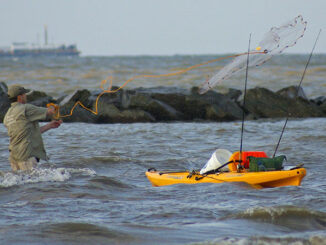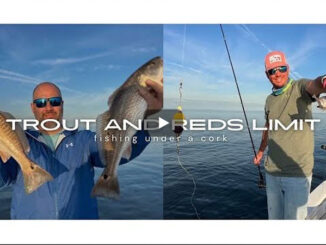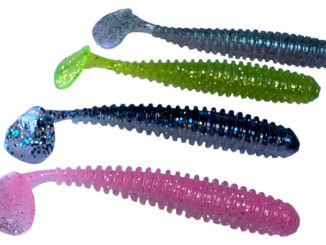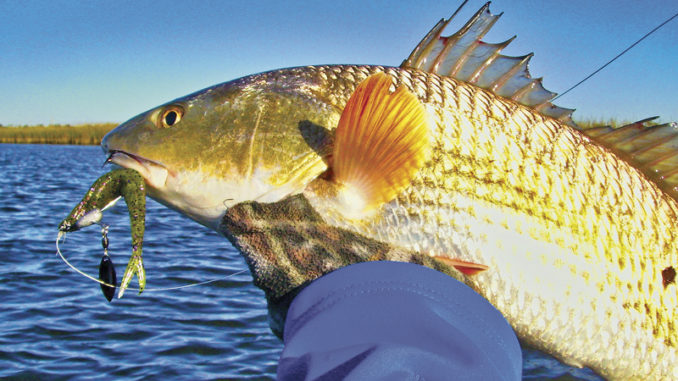
Tactics change for winter fishing trips
Many days in January can be downright miserable, but many can be pleasant. Pick the good ones, and you can have a successful kayak-fishing trip for a wide variety of species. Fresh or salt, the biggest key is to realize that you are fishing colder water. Fish are cold-blooded, and therefore get their body temperature from the surrounding water. The colder the water, the more their metabolism slows and the less they need to eat. Colder water also contains more dissolved oxygen, and fish can more easily breathe with less movement and gill action.
Slowing down the presentation of artificial lures and using natural bait or scented plastics is a big advantage in enticing lethargic fish to bite. They may not have to eat, so it’s your job to make them want to eat.
Another key factor is that fish are generally more concentrated in colder water. Use your depth finder to find deeper holes where water temperatures may be a few degrees higher, but enough to attract schools of fish. In the south Louisiana marshes, deeper is a relative term. While 6 feet is not really deep, it is twice as deep as 3 feet and can make the difference between catching and skunking.
If you do not have a depth finder, check out the outside turns of bayous where the current scours the bottom resulting in deeper areas. Crab traps are also a key to the deepest areas in the marsh. The trap line will generally be in the deepest path. On colder days, focus on these deeper areas. If there is a hole that moves up to a defined ledge, position the kayak to try several different presentations. One is to throw out to the deepest water and slowly work your bait back up the ledge. If that doesn’t work, set up to cast onto the ledge and slowly work the bait across until it naturally falls off into the deeper water. Often, it will get smacked on the way down. Slowly but thoroughly, fish a spot from all directions before giving up and moving on.
Although fish are generally deeper in winter, it is not always the case. After a couple days of moderate temperatures and bright sunshine, the water on the flats may warm just enough for fish to move up and become more active. Watch for any telltale signs of life, be it a ripple, splash or any moving bait. If you see it, fish it.
Tight-lining live minnows or soft-plastic baits is a great way to draw strikes. The bait can be slowly retrieved, often right in front of the fish’s nose, presenting an opportunity they just cannot refuse. Adding a little bling also adds flash and vibration to soft-plastic baits. Jigheads with small spinner blades attached help get that slow-moving bait noticed. Strikes are often subtle, and you generally won’t get that rip-the-pole-out-of-your-hand strike. Therefore, keep good contact with your bait during the retrieve and set the hook on anything that feels different. This is where using braided line really shines; it transfers every little vibration or slack line feeling.
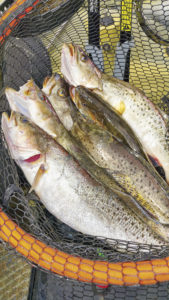
Suspending lures like Corkys and MirrOdines are great for tricking winter fish into a strike. These suspending twitch baits can be worked almost in place, keeping them in the strike zone extended periods and giving fish ample time to decide it is worth the little effort necessary to grab a meal. The biggest mistake made when fishing these lures is working them too fast. It is difficult to fish ultra-slow, but that is what it takes. When you think you’re going slow enough, slow down some more.
Many other baits that are typically worked with a moderate or fast retrieve in the summer can be easily adapted to winter fishing. Fish a lighter spinnerbait and slow-roll it across various depths. Adding a floating soft-plastic tail like those made by Z-Man also helps the lure off the bottom when using a slow retrieve.
Of course, using a popping cork with live, dead or scented plastics can be worked with little or even no movement at all. Throw it out and let it sit, with just a few twitches or a slow retrieve to move it just a foot or two before stopping again.
Many anglers who use topwater plugs mistakenly believe they are only effective during warmer months. Fish can be caught year-round on topwaters. Again, a change in retrieval technique is necessary for success. Slow, slow, slow…. On those days when an increase in water temperature has fish more active and prowling shallower flats, topwater lures can be deadly. Cast and retrieve with your usual pattern, only take a couple minutes to complete each retrieve, with long pauses of having the lure sitting still. It takes patience, but the reward is worth it.
Another key to successful winter fishing is to fish later in the day. There is no need to get out at the crack of dawn. Let the sun come up and do its thing. You’ll be more comfortable, and so will the fish. The early morning bite of summer generally doesn’t happen in winter. As the day warms, usually, so does the action. Mid-morning through mid-afternoon is generally the best time to be on the water.
